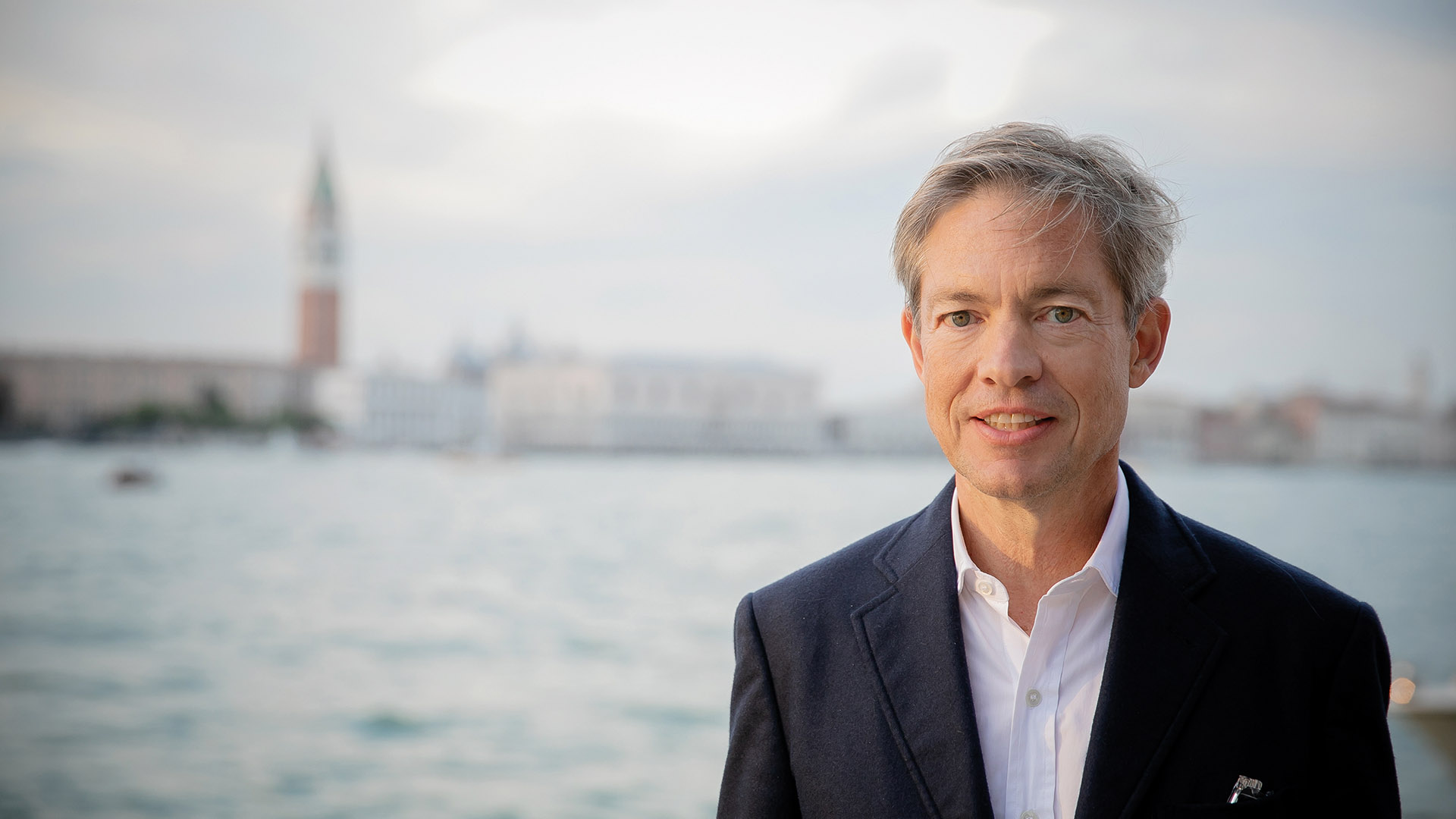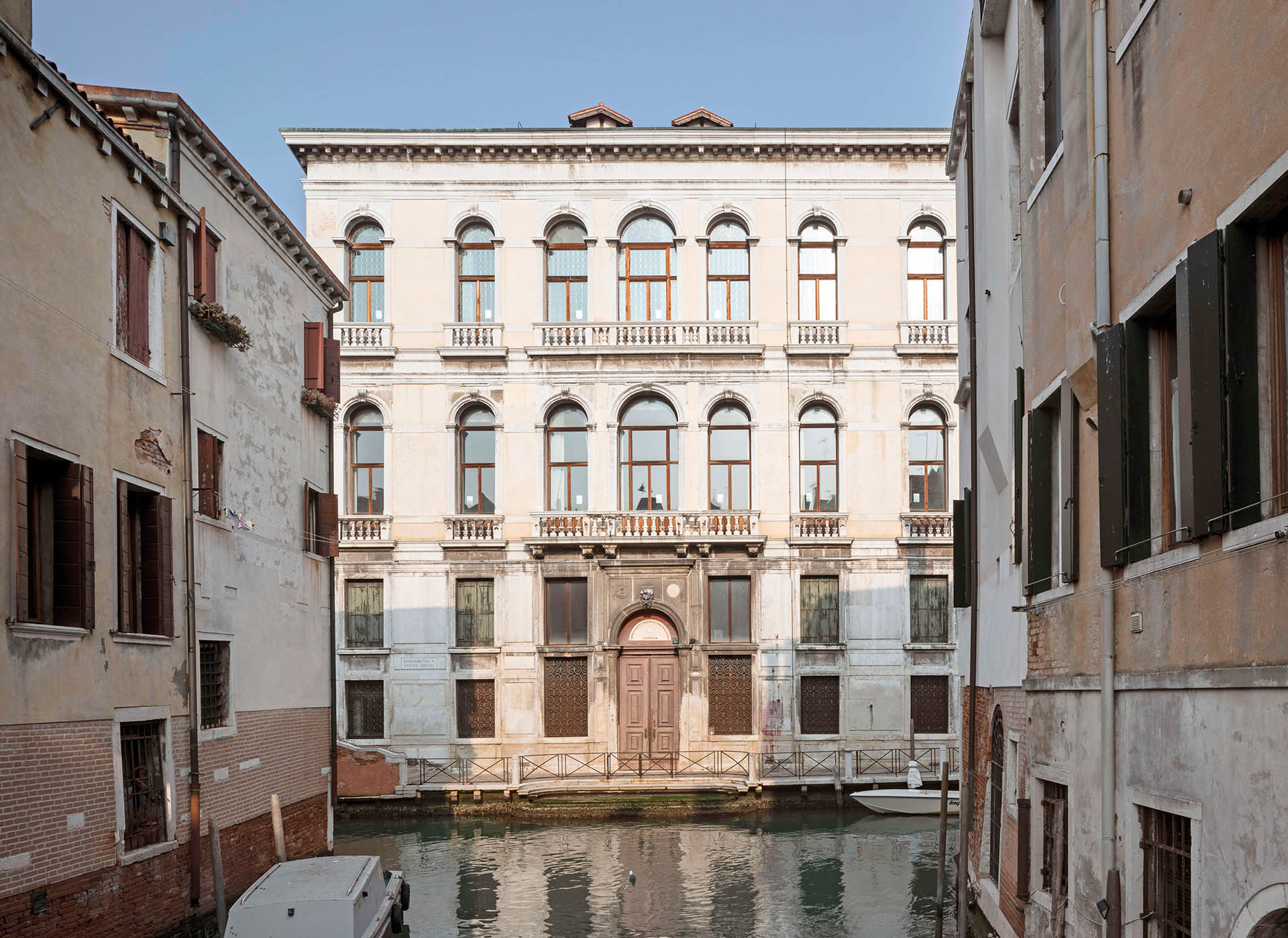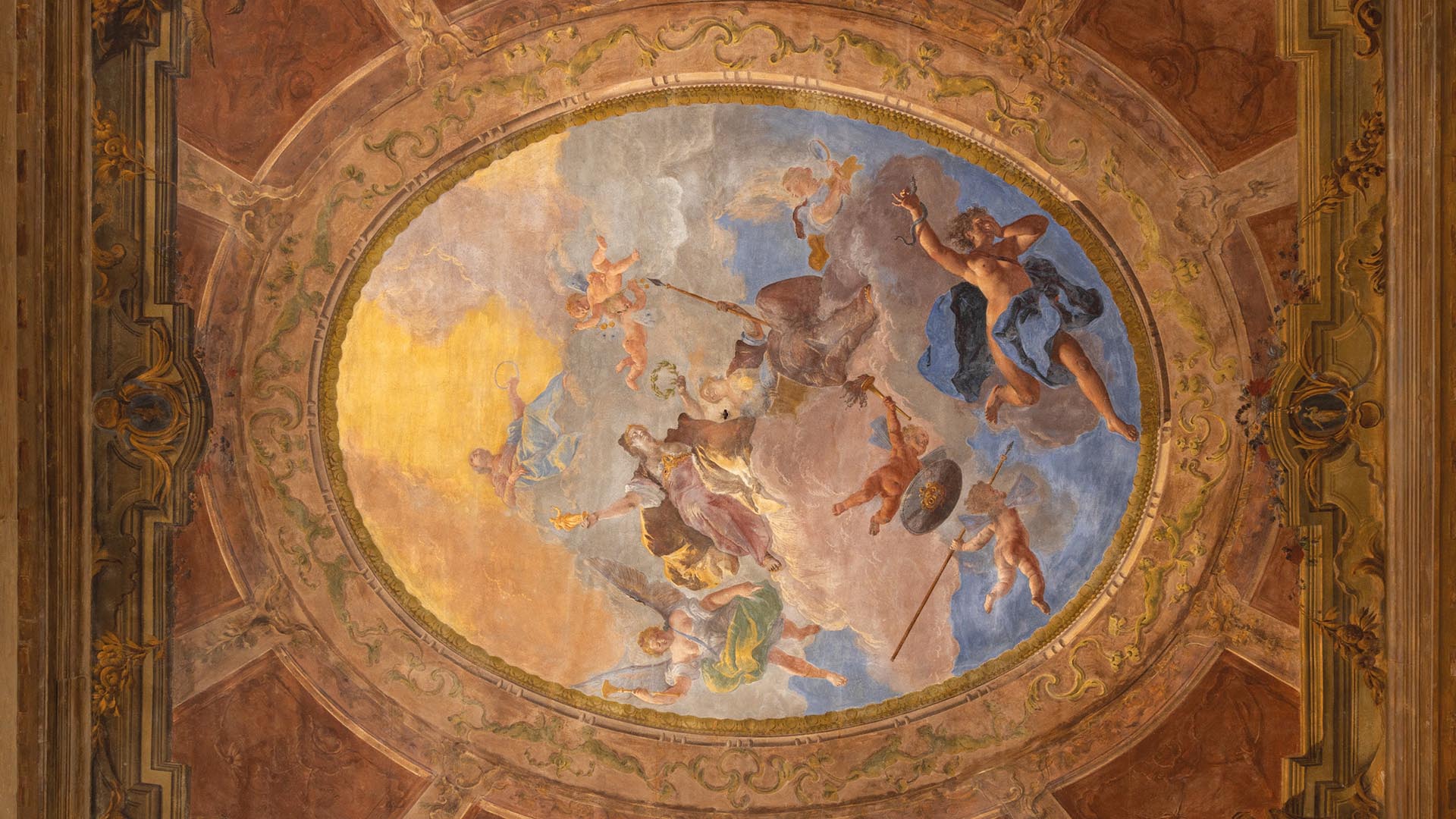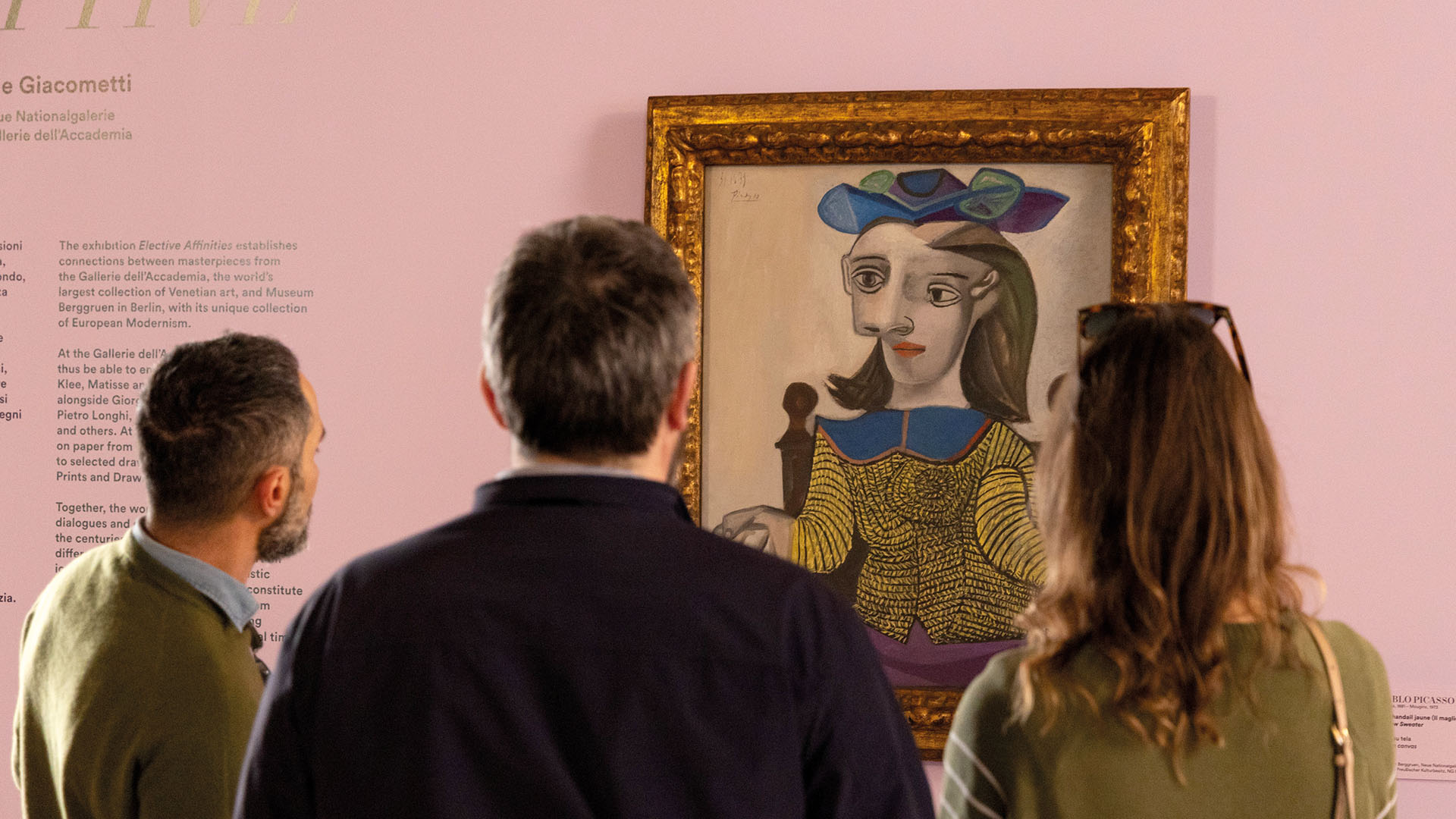

Mario Codognato has been curating many monograph exhibitions, as well as their catalogues, for contemporary artists. This year, we will see the result of his work in establishing the Berggruen name in Venice in two places in town: Palazzo Diedo and Casa dei Tre Oci, which have been recently acquired by Nicolas Berggruen.
After he left, he didn’t think he would ever come back to live and work in his hometown. Mario Codognato was born in Venice in a well-known family: his late father Attilio had a jewellery shop and is remembered for his impeccable taste, creativity, and love for the arts. Attilio’s home is a veritable private modern art museum, and that’s where young Mario received his art imprint. He would later study art history and work in London, Naples (his curatorship at the MADRE Museum was universally praised), at the 21er Haus at the Vienna Belvedere, and in many other museums of international relevance. Mario Codognato also curated monograph exhibitions, as well as their catalogues, for contemporary artists. Lately, several projects he was working on took him back to Venice. Codognato was instrumental in opening an office of the Anish Kapoor Foundation in Venice, back in 2022. This year, we will see the result of his work in establishing the Berggruen name in Venice in two places in town: Palazzo Diedo and Casa dei Tre Oci, which Nicolas Berggruen recently bought.

A protagonist’s role for the upcoming art season in Venice.
Gary Garrels and I curated the exhibition on William de Kooning that the Gallerie dell’Accademia dedicated to this great artist. The exhibition focuses on Kooning’s travel to Italy, which proved essential in the development of his art. Nonetheless, we may see the exhibition as an anthology, seeing how large is the timeframe of our curatorial interest. We are looking at some thirty years in the 1950s–1980s period. Thanks to important and welcome loans from European and American museums, we have been able to produce a project of very broad scope and excellent quality, which proves just how much the Gallerie dell’Accademia cares about modern art, and not about earlier art epochs exclusively. This is a positive influence of the Art Biennale. I will add I feel honoured to work with an outstanding colleague such as Gary Garrels and with the Willem de Kooning Foundation. To work on such an important exhibition is a dream come true. There’s a second exhibition that will open concurrently with the Biennale. Berggruen acquired Palazzo Diedo to make it an exhibition centre for modern art and a residency project for artists. Thanks to a new Foundation, Venice will enjoy the restoration and renovation of one of its most beautiful palaces, which sadly lay abandoned for many years. Palazzo Diedo used to house a school and a court of law, both showing how livelier Venice used to be. Well, now, art will do its part to breathe new life into it and into the social life of the city.

The role of Foundations.
Over the last few years, there have been new private enterprises set up home in Venice, each bringing a capital of sensitivity and different approaches in the world of art. While private, they are very open to the public, which is great in their ability to capture attention and convey it on interesting projects – all important and all deserving of space. From this point of view, we can say Venice became a hub, no, a world capital of contemporary art. With Berggruen Arts & Culture, we feel we can be an integral part of this diverse world of art. This diversity is born of the excellent ingredients that converge in Venice and are held together by their excellent quality, with patrons and professionals working to make it all possible. As far as my project goes, the work of Berggruen Institute Europa headquartered in Venice will be about art, technology, science, and politics. If there’s one feature we’ll find the most peculiar, it’s the interest it shows for the Far East, China in particular, meaning art milieus that by and large still have to make their appearance in European collections, Italian in particular.

Your place(s) in town.
We have another place to call home in Venice, the Casa dei Tre Oci in Giudecca Island. The Berggruen Institute already has offices in Los Angeles and Beijing. The director of the Venice office will be Lorenzo Marsili, who will oversee the Foundation’s scholarly work on philosophical and political themes as well as managing related conventions and residencies. On our side, we will work on contemporary art, and will link with our sister team to look for points of contact and synergy, to make artists and humanists communicate. Palazzo Diedo is our house for the arts, we said as much. Our priority is to open it up as it needed massive renovation efforts. Throughout its halls, you’ll see eighteenth-century frescoed vaults, which is why we hired artists Urs Fischer, Piero Golia, Carsten Höller, Ibrahim Mahama, Mariko Mori, Sterling Ruby, Jim Shaw, Hiroshi Sugimoto, Aya Takano, Lee Ufan, and Liu Wei to create site-specific art. We want to follow in the palazzo’s history and make ancient art and modern art speak to one another. Our upcoming exhibition, Janus, comes after the two special projects we produced with The Kitchen in New York and with the Polaroid Foundation. Our goal is to look at the Art and Architecture Biennales, but we are also looking forward to keeping Ca’ Diedo open year-round. It shall be a living, breathing space. When artist’s residencies will be operating, their six-month calendar will define its activities. We are definitely enjoying longer seasons in Venice thanks to eight-month Biennales keeping the city living and its cultural offer interesting year-round.

Part of the Berggruen Collection in Venice.
Heinz Berggruen (1914–2007) was Nicolas’ father. A German art collector and philanthropist, he dealt with the art of two of the greatest protagonists of international modern art: Picasso and Matisse. That’s just to name two. Of Jewish origins, he fled Nazi Germany and settled in France. During his last years, out of a spirit of reconciliation with Germany, he donated more and more of his collection to the city of Berlin. In Germany – much more than in Italy – the public and private sectors work virtuously together, with public museums acquiring art once belonging to private individuals, and also displaying art that remains the property of a private family. The Berggruen Museum in Berlin closed for renovation in October 2022, and will be closed until 2025 at the earliest. Since the Berlin museum was closed, the art went on an Asian tour first, and before travelling to Paris, it will stop in Venice. With Gallerie dell’Accademia, we decided to take advantage of its presence and produce an exhibition in both our offices, at Gallerie and at Casa dei Tre Oci. It will be an amazing exhibition, with art by Picasso, Matisse, Klee, and Giacometti. Curated by Giulio Manieri Elia and Michele Tavola, director and curator at Gallerie dell’Accademia, respectively, and by Gabriel Montua and Veronika Rudorfer, director and curator at the Berggruen Museum, the exhibition is particularly interesting because seventeen pieces from the Berlin museum will be exhibited at the Gallerie together with their permanent collection, in a sort of dialogue with art from different epochs, masterpieces of Venetian art and more. The public will witness a powerful, transversal exchange between centuries of artistic expression in what amounts to true and proper elective affinities that will measure and highlight the expressive potential of these two outstanding art collections. The exhibition goes on at Casa dei Tre Oci, where the conversation flows among four pieces on paper from the Gallerie’s collection and twenty-six watercolours and works on paper by Klee, Picasso, Cézanne, and Matisse from the Berggruen Museum.

A memory of your father, Attilio.
I had the fortune of being close to him, especially in his late years. What a beautiful surprise to see the Guggenheim’s past exhibition on Marcel Duchamp include some of Duchamp’s art my father owns and loaned to the museum. It proves even further how deep and extensive his research has been on the art of a complex character as Duchamp was. His departure saddens me deeply, though is soothed somewhat by the possibility to see the real, factual outcome of his teachings and his sense for the arts thanks to homage like the one produced by Guggenheim. I hope his inspiration passed on to me, and that the largest possible audience might benefit from seeing what he had built over decades of passionate, tireless research.